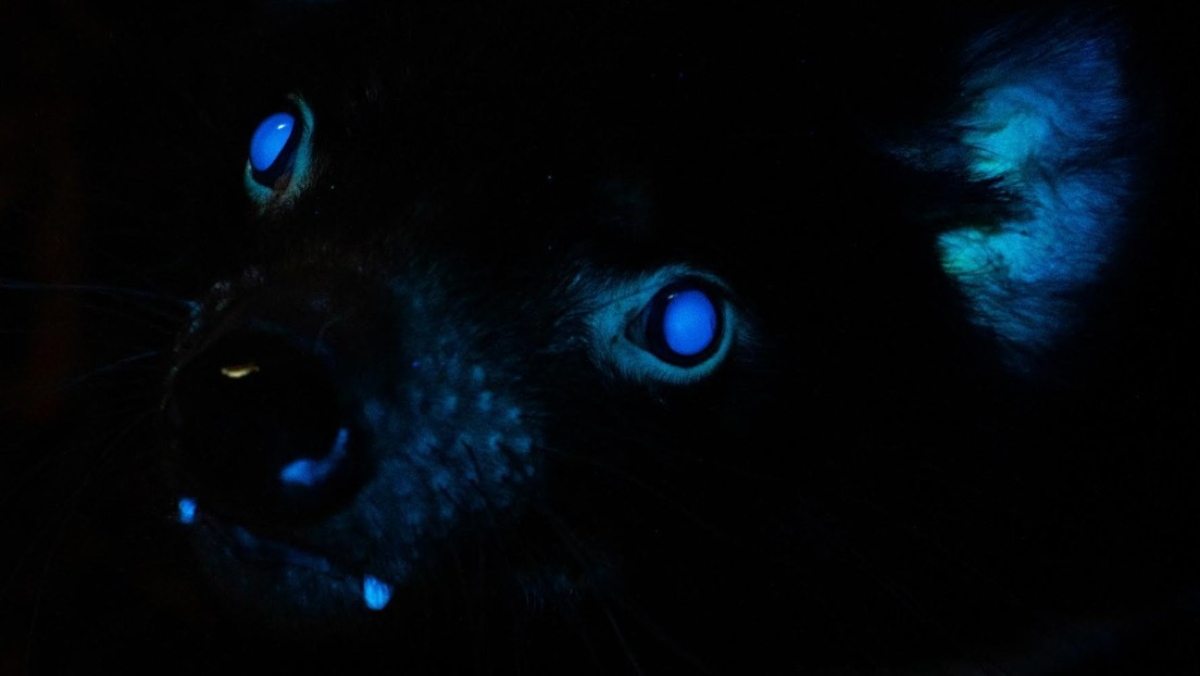Earlier this year, scientists published a paper outlining how platypuses exhibit biofluorescence under ultraviolet (UV) light. That is, how the duck-billed mammals are able to glow like a black-light poster when lit up with the invisible light. Now, more reports of other mammals glowing under UV light are beginning to emerge. Although when it comes to understanding why they do so, it seems everyone’s still in the dark.
After platypus was shown to glow under UV light, couldn’t resist trying bilbies... their ears and tails shine bright like a diamond! #bilby #uv pic.twitter.com/wL82RDdFYb
— Dr Kenny Travouillon (@TravouillonK) November 3, 2020
The New York Times recently reported on multiple instances of mammals exhibiting biofluorescence. It appears the paper on glowing platypuses inspired other members of the zoological field to take up a UV light and check their own animals—dead or alive—for the ability to glow. (And why wouldn’t it?)
Dr. Kenny Travouillon, the curator of mammals at the Western Australian Museum, for example, decided to douse his own specimens in UV light in early November. In the tweet above, he notes he “couldn’t resist trying bilbies,” which are rabbit-like marsupials. Lo and behold, the little bilbies glowed like bil-bulbs!

Jake Schoen/Toledo Zoo
The Times notes Travouillon and his colleagues also tested a handful of other species of marsupial, and found more biofluorescence. The quills of hedgehogs, porcupines, and echidnas all shone white under UV light. As well as one species of wombat. Although another species of wombat did not, nor did any of Travouillon’s kangaroos.
Researchers at the Toledo Zoo in Ohio, likewise, used UV lights on some of their mammals. In a post on Facebook, they noted their Tasmanian Devils glow under UV light. And, in fact, say this is the first documented case of the feisty Australian carnivores doing so.
Platypuses just keep surprising us - a new study finds that they fluoresce under UV light. But we don't know why.#MonotremeMonday #platypus #platypuses
— Jack Ashby (@JackDAshby) November 2, 2020
[📷Anich et al., Mammalia, 2020]https://t.co/KbQpwReZsw pic.twitter.com/d3L4pl2qTz
As for how the mammals are able to glow under UV light, that ability comes thanks to their having fluorescent proteins in their skin, hair, eyes, etc. These proteins absorb the UV light at one wavelength, but then emit it at another. This is why the mammals can absorb invisible UV light, but then emit it as visible light; the shift in the light’s wavelength brings it into the human eye’s visual spectrum.
The reason why these mammals exhibit biofluorescence, however, is still unclear. It’s possible there’s some evolutionary benefit to glowing under UV light—perhaps for covert signaling, or to confuse predators who hunt at night—although it seems there’s little evidence for that. Which may mean these mammals exhibit biofluorescence for the same reason we humans’ teeth and nails do. Meaning, the characteristic may simply be a fluke, and nothing more than a cool black-light party trick.
In case people are still doubting the marsupial glow, after living Tasmanian devils were shown to glow, the same glowing ears and skin around the eyes was found to glow in museum skins. Definitely not fungal or arsenic related as some suggested. @ToledoZoo @wamuseum #marsupial https://t.co/HnZFy0O2p6 pic.twitter.com/LOGeuzHOKq
— Dr Kenny Travouillon (@TravouillonK) December 11, 2020